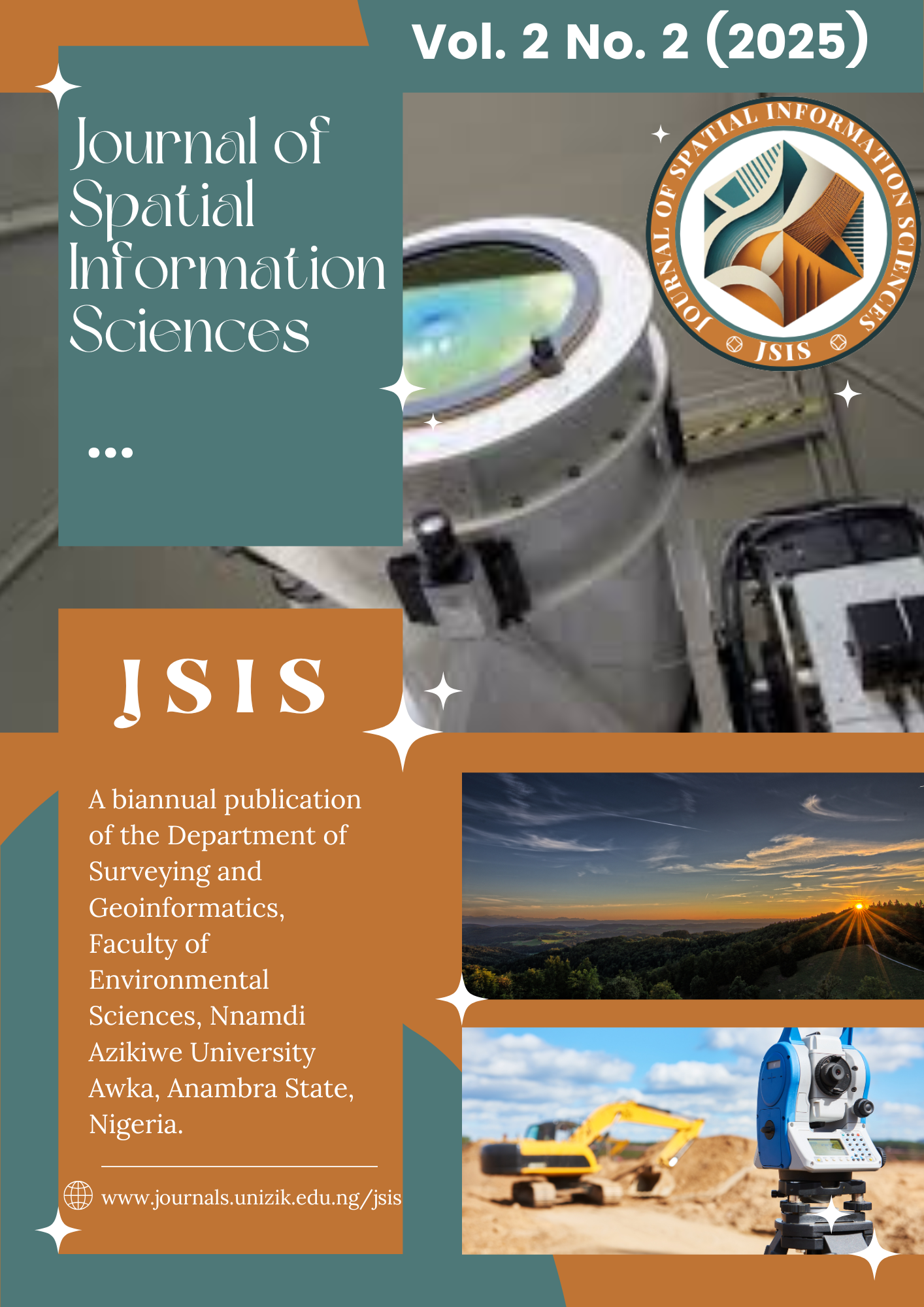Investigating the Altitude-Dependent Accuracy of Depths Derived by Colour Ratio from Unmanned Aerial System (UAS)-Multispectral Imageries
DOI:
https://doi.org/10.5281/zenodo.15668026Keywords:
Multiple Linear Regression (MLR) Model, Unmanned Aerial System (UAS), Multispectral Imagery, Bathymetry, Flight AltitudeAbstract
Bathymetry is an essential requirement in marine applications such as sea navigation, coastal monitoring, forecast of coastal phenomena and engineering constructions. Bathymetry is traditionally acquired via shipboard echo sounding which is usually very expensive, labor-intensive added with inability to access remote or unnavigable areas. But, nowadays, remote sensing methods, such as space-borne or air-borne imaging or lidar have been employed in determining water depth, hence offsetting the setbacks associated with the conventional approaches. Unmanned Aerial System (UAS)-photogrammetry offers a good opportunity for mapping waterbody bottom relief because of its higher image resolution. The study, targeted at determining the various accuracies of bathymetries achievable at two different flight altitudes focuses on: determining the bathymetry of a portion of Otamiri River (25 Ha) using standard echo sounding procedure; conducting UAS imaging flights on two altitudes over the same portion of Otamiri River in Owerri Imo State; retrieving the bathymetry of the riverbed from the images of the two flights by applying Multiple Linear Regression (MLR) algorithm based on optimal band ratio analysis (OBRA). Ground controls and check points were established with Static and RTK GNSS observations. The images were acquired with 1-Inch CMOS effective 20 megapixels sensor at flight altitudes of 90 m and 150 m with 50% as forward and lateral overlap respectively. The images were processed and georectified with ground control points (GCPs) using Agisoft Photo Scan software. MLR model was calibrated with a fraction of echo sounder depths and the corresponding log-band ratios. The UAS-derived depths were validated statistically by comparing with echo sounder results to determine mean absolute error (MAE), root mean square error (RMSE) and coefficient of determination (R2). The MAE and RMSE (0.27 m and 0.31 m; 0.40 m and 0.48 m) were obtained at 90 m and 150 m flights respectively. The MAE and RMSE increase as the flight height was increased from 90 m to 150 m. Admit other factors, the difference is mainly due to changing flight height. Hence, drone data acquisition should be conducted at lowest possible altitude to achieve finer results.
Downloads
Published
Issue
Section
License

This work is licensed under a Creative Commons Attribution-ShareAlike 4.0 International License.





